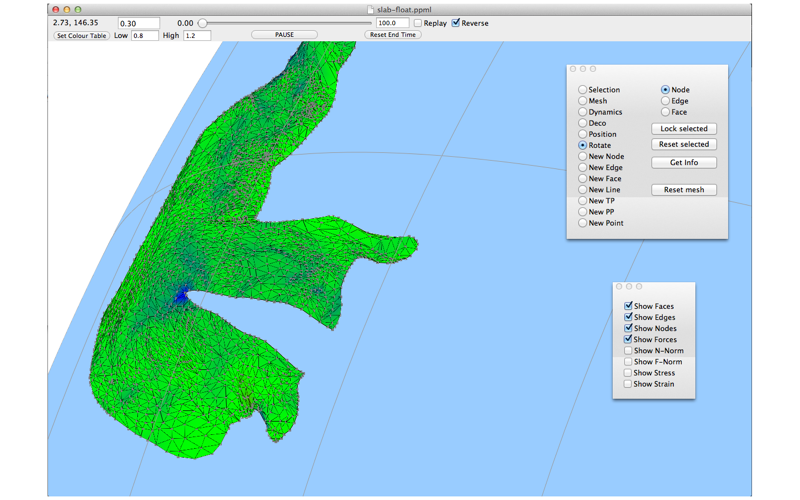
Tectonic reconstruction using deformable and tearable meshes to simulate the behaviour of the Earths lithospheric plates. Pplates utilises SceneKit and the MacOS metal framework, with orthographic and perspective projections of the Virtual Earth representation of the planet. Perspective enables the user to fly beneath slabs to image the earthquake distribution for example. Calculations "under the hood" in the Pplates math engine now use quaternions, and the rotation of individual mesh objects is calculated, for any specific time, from a collapsed pole sequence. This reduces the overhead for the calculation, and thus enhances interactivity. However, the collapsed pole sequence must be calculated before moving back or forward through time. 3D mesh objects to be mapped to the 2D mesh window and re-associated with texture images.
Pplates adopts measures to reduce the number of vertices in any scene graph, thereby considerably enhancing application performance. Nodes and edges will not be enhanced unless they are selected. The PPML stores the reference state as well as the current location so it is possible to recompute areal distortion and the 2D-finite strain tensors. This is facilitated using the Orpheus panel, otherwise used to resurrect 3D models of subjected lithospheric slabs from the mantle graveyard and to return them to the planet surface.
